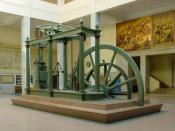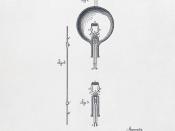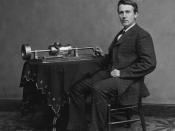During the late 1800s, the United States economy changed due to new inventions, remarkably rapid growth, and new forms of communication and transportation. These benefits brought about changes with new inventions. New inventions and manufacturing brought about more jobs in different industries, one being textiles. Some of the problems faced were child labor and low wages.
Throughout the industrial revolution, there were different inventions that affected the people in different ways. For instance, the completion of the transcontinental railroad, as shown in Document 1, eased transportation and communication. The transcontinental railroad had a positive effect. Farmers could transport their goods quicker and easier. The railroad provided jobs in iron, steel, and lumber. It opened new markets and expanded the old, selling various products to different places.
The inventiveness of Thomas Edison, Alexander Graham Bell, and many others greatly contributed to the economic growth during the late 1800s. The photograph shown in Document 3 is a picture of Edison in his research laboratory with his inventions.
The creations of the phonograph, motion picture, the lightbulb, or the electric power plant, greatly increased the quality of life. With these establishments, transportation was easier and quicker. Communication throughout the nation was much easier and business was more profitable with electric machines. Without these inventions, the world today would not be it's industrial self.
The Industrial Revolution resulted in many high-ranking industries. By the end of the 1800s, there were four major industries. The major industry was the textiles with one billion dollars in investments. They had a total of 824,000 workers and the cost of labor for iron and steel was $285 million. Other major industries was iron and steel, lumber, and food processing. All of these industries had at least half of a million dollars in investments. The industries were all linked...



O.K.
Sort of choppy - doesn't flow very well, and an industry is an "it", not a "they". Overall, though, it's a useful essay with substantial facts and figures.
0 out of 0 people found this comment useful.